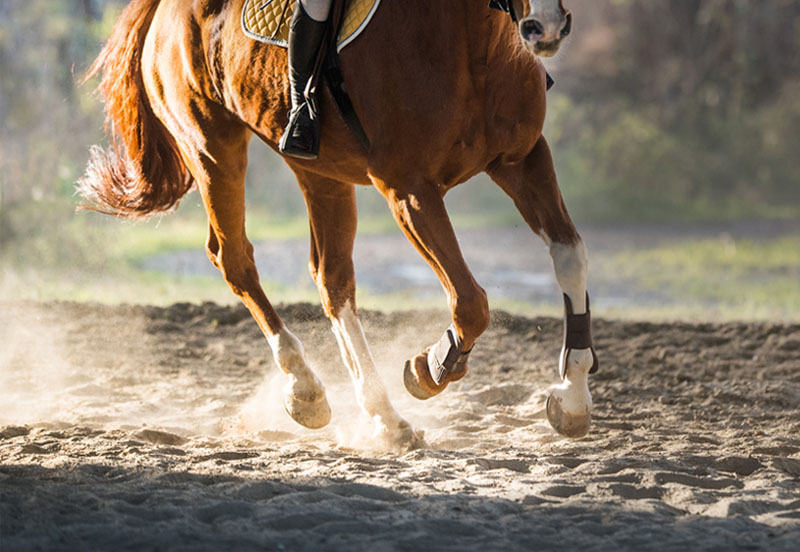
A friend of mine has a wonderful little horse that is rising 7 years old but very weak and a little on the green side. Last Sunday she was quizzing me about his flat work, specifically his collected canter.
I have to say that the question made me laugh, and I explained that there’s no way she’ll get collected canter from her boy just now. He’s simply not strong enough to do anything more than possibly a couple of strides yet.
She had, of course, Googled the question and found a site that advised her to half halt and apply pressure with her legs to keep the momentum going up into her hands. All I can say is, it’s not the best advice and probably not going to work.
Anyone could explain to me the process of doing the splits, and even provide me with the best gymnastics teacher in the world, but I’m still not going to make it down there!
I’m just not flexible enough, and I haven’t done the necessary training. It’s exactly the same when it comes to your horse and his collected canter movement.
A collected canter is improved by strengthening your horse’s hindquarters, and lots of training. I’m sorry to say that there’s no silver bullet for this one, unless you have an incredibly strong, developed young horse – and then you probably have your own set of problems!
The truth is, a collected canter takes time, training, and patience.
So, here are some tips to help you improve in this area when working with a young or weak horse.
Transitions, transitions, transitions
Focus on building strength in canter as young horses are typically weak in this area. The transition into canter uses more of the muscles and power required for collected canter than the movement of normal canter itself.
Try this with walk to canter, and trot to canter. I prefer walk to canter as it gives me more control in the transition—if you get three to four controlled paces without all the power running out of the front end, reward your horse and bring him back to trot or walk.
Avoid continuing in an unbalanced canter around the outside of the school as that will tire both of you out, and not solve the problem of building a collected canter for any type of discipline.
Make it fun for your horse
A small course of show jumps or raised poles can make the process fun both for you and your horse. Start out with the overall objective of working on transitions, but don’t overthink what you’re doing as that can do more harm than good.
Instead, make it fun and distract yourself with work that becomes play.
You’ll be surprised at the number of transitions involved in work on small show jumps or raised poles without you even realising.
I usually find that by the end of the session the horse’s canter naturally collects – even for just a few paces – to allow preparation for the jumps or poles.
Never slow down by pulling the reins
You want your horse to enjoy going forward – after all, it’s much better than the alternative!
If you don’t have any balanced or smooth canter, pulling on the reins will simply bring you back to trot, over and over again. I know from experience that will leave you either questioning your own abilities, or sadly frustrated with your horse.
Avoid this by using small circles to slow down.
There’s only so fast a horse can canter on a tight circle, so as you gradually reduce the size of a small circle, they’ll naturally collect to cope with the size. Then as you take your circle out a little bit, try and keep that canter. If it starts to get unbalanced and rushed again, go back into the small circle for the naturally more collected canter, and repeat.
You may even notice that some kicking is required when moving into the small circle!
Yes – believe it or not, even a sharp horse may need some encouragement to keep their back end driving forward.
If they’re weak and struggling to collect, then regardless of their sharpness, they’ll still be weak. The small circle technique puts the horse in an environment where a more collected canter is required, without any mixed messages or unnecessary pressure from you.
Keep your collected canter work short
Working on collected canter is tough both mentally and physically. If you go to the gym and your personal trainer gets you to do some pull ups, you’re going to get tired quickly, even if you get lucky and manage some!
It’s the same here, so focus on quality over quantity.
After a bit of quality collected canter work, reward your horse for his efforts and end the session with some work that both of you find more comfortable – even some long and low exercises at walk.
Horses and riders aren’t machines
This final tip is often the most underused and underappreciated piece of advice.
But, if something’s not working because you’ve had a stressful day – if you simply can’t seem to replicate your successes of the last session – or if your horse is tired and having an off day, then stop.
Give him a pat and call it a day.
There’s always another session to come, and if you’re flustered or frustrated, then you probably aren’t making much progress anyway.
Cool him down and focus on tomorrow.
Summary
Strengthening collected canter takes patience, discipline, and time, but when you can feel your horse’s collected canter improve, it’ll all be worth it.
I hope you find some useful advice in these tips – and remember, it’s a marathon, not a sprint!
Let us know if you there’s anything that worked well for your horse in the comments.


